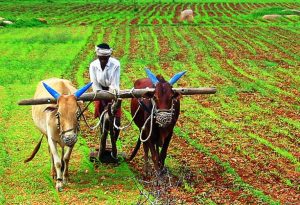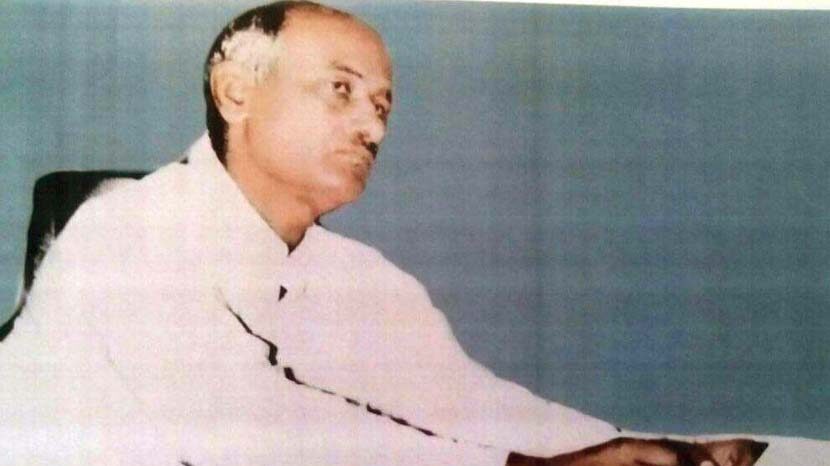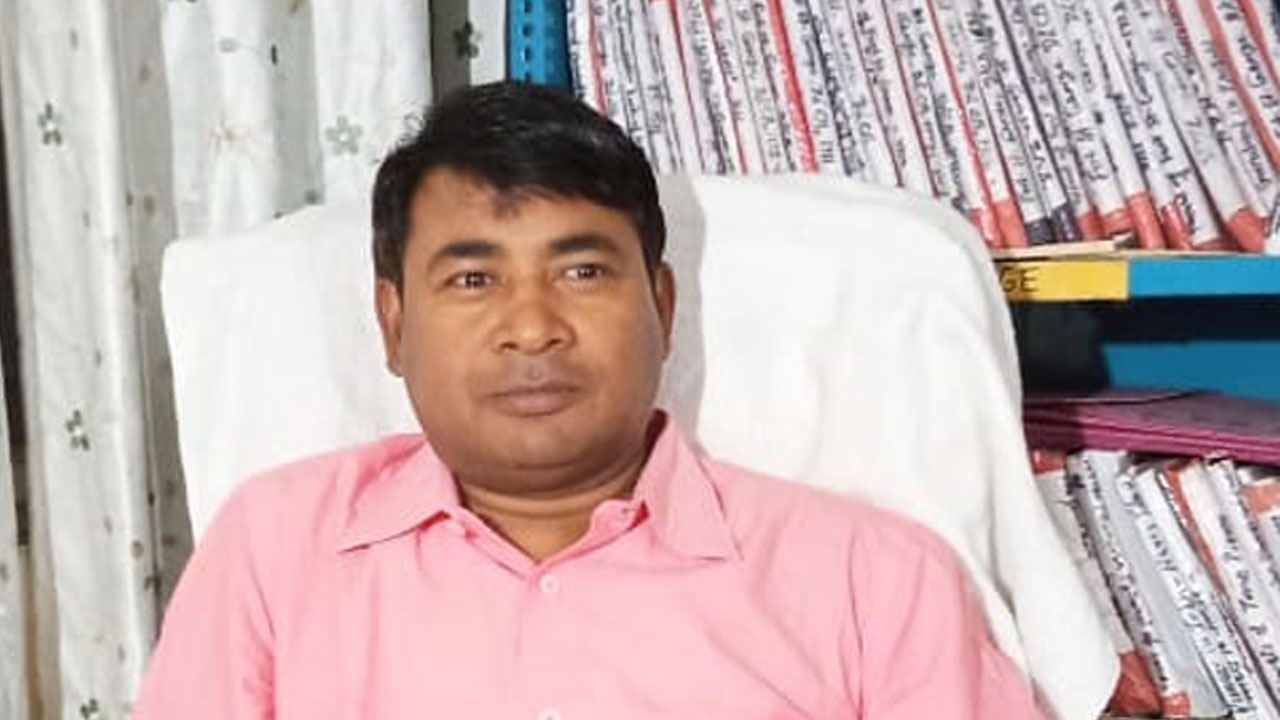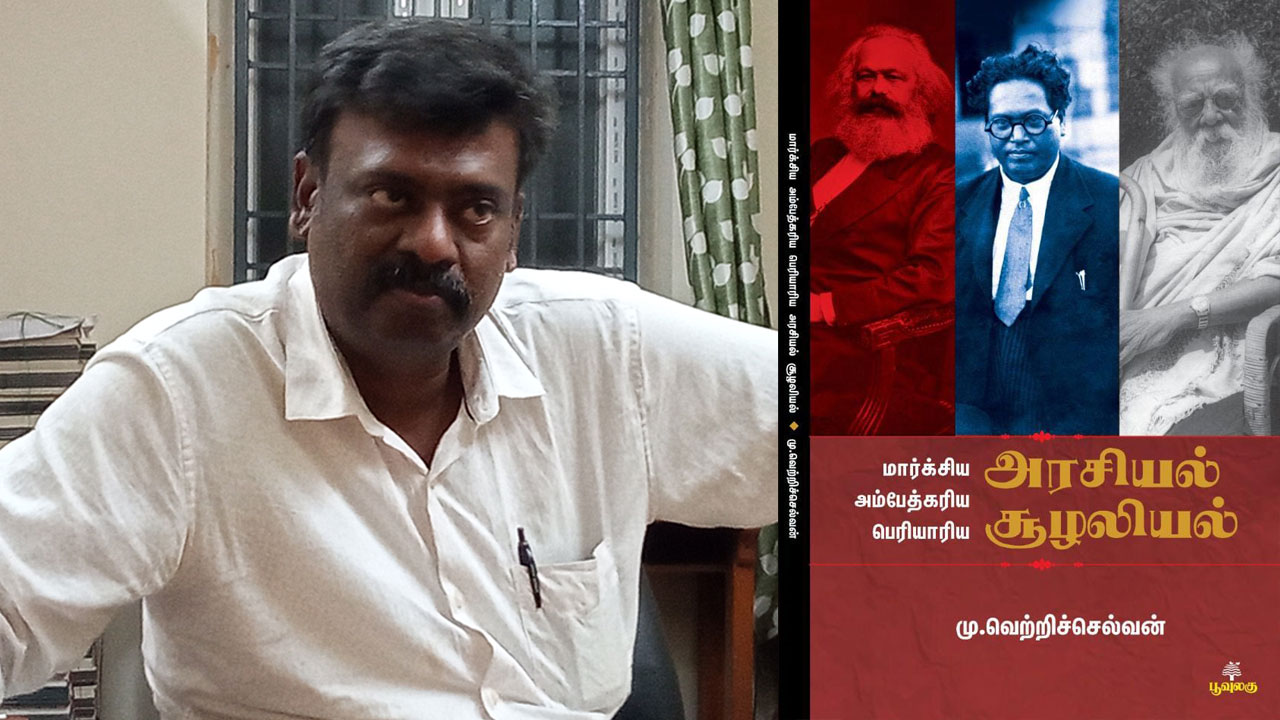A Dalit’s grasp of land issues in India is far superior to that of any other class. The reason is not too far to seek. No other class has suffered as much due to land (or the lack of it) as the Dalits. It has made Dalits cry, it has led to them being burnt alive, it has ruined their homes, it has forced them to migrate from their homes and hearths, and it has made their women suffer indescribable indignities. That is why Dalit thought is very articulate on land issues.
 Dalit thinking on land issues can be traced to Kabir. That was in the 15th century. Kabir’s verses very realistically and touchingly depict the atrocities of the landlords, the unbearable burden of land revenue, the grinding poverty of the peasants and their forced migration from the villages. In the 19th century, Jotiba Phule wrote Kisan Ka Koda, centred on land issues.
Dalit thinking on land issues can be traced to Kabir. That was in the 15th century. Kabir’s verses very realistically and touchingly depict the atrocities of the landlords, the unbearable burden of land revenue, the grinding poverty of the peasants and their forced migration from the villages. In the 19th century, Jotiba Phule wrote Kisan Ka Koda, centred on land issues.
It is said that “Sabe bhumi Gopal ki” (All the land belongs to god). But that was never true, except in the primitive age. As the civilization developed, private ownership of land became the norm. One who was able to grab the biggest chunk of land became the landlord and subsequently, probably the biggest landlord became the king. During the monarchial rule in India, Brahmins changed the meaning of “Gopal” to king and “Sabe bhumi Gopal ki” became “Sabe bhumi raja ki”.
In the 20th century, Dr Ambedkar famously asked, “When all the land belongs to the king, how has its ownership passed into private hands?” It was the kings who began this process. Whenever they were pleased with someone, they gifted away entire villages to them. Thus emerged a new set of landlords. But after the fall of monarchies, the state should have become the owner of the entire land and private ownership should have ended. But that did not happen – the reason being, according to Dr Ambedkar, the socialists did not fight for land rights. Moreover, even in independent India, power remained in the hands of former rajas, nawabs and landlords. They and their Brahmin masters did not want nationalization of education, land and industry as that would have brought about economic growth of the Dalits. Even in democracy, they wanted the rule of the Brahmins to continue.
Dr Ambedkar vociferously raised this issue in Parliament. In September 1954, while speaking on the report of the National Commission for Scheduled Castes and Scheduled Tribes for the year 1953, he drew the attention of the House to the land issues. Referring to the demands for the government providing land to the Dalits, Ambedkar asked three questions. First, is land available? Second, does the government have the will and the power to acquire land of the landowners? And third, if someone wants to sell land to Dalits, will the government provide the funds to purchase it? He said that Dalits would get land only if any of the three answers was in the affirmative. He said that the government should make a law putting a ceiling on the land a person can own and then allot the excess land to the Dalits. If the government cannot do that, then it should provide money to the Dalits to buy land.
 He opposed the notion that land is only a source of livelihood. His view was that in India, land was also the determinant of one’s social status: A landowner considered himself to be of a higher social standing than a landless person; that was why no Hindu wanted the Dalits to become landowners and be on a par with the upper castes – something that was unacceptable to the Hindu social system. He said that this was the reason why Dalits were finding it impossible to get even a small piece of land in villages.
He opposed the notion that land is only a source of livelihood. His view was that in India, land was also the determinant of one’s social status: A landowner considered himself to be of a higher social standing than a landless person; that was why no Hindu wanted the Dalits to become landowners and be on a par with the upper castes – something that was unacceptable to the Hindu social system. He said that this was the reason why Dalits were finding it impossible to get even a small piece of land in villages.
He expressed his surprise over the fact that the government had not put a cap on the land a person can own. Had the government done that, he said, it would have heralded a revolution on the ground. He emphasized that instead of making the farmers owners of land, had the government kept the ownership of land with itself, it could have ensured that no one was allotted more land than the prescribed ceiling. He said that it was foolhardy on the part of the government to have made people owners of land.
Ambedkar related to the MPs an exchange between Napoleon and Talleyrand. Once Talleyrand asked Napoleon, “What enmity do you have with Europe? Why don’t you agree to become the emperor of France? I will be your prime minister.”
Some soldiers were standing outside Napoleon’s palace. The bayonets of their guns were shining in the sunlight. Napoleon was a short-tempered man. He asked Talleyrand, “Do you see my soldiers?”
“Yes, I do,” Talleyrand replied. “Then why am I not an emperor?”
Talleyrand’s reply has become legend. He said, “The only thing you cannot do with a bayonet is sit on it.”
Similarly, Ambedkar said, the government could not sit on the private property created by it but its owners would definitely do so. He said that the Congress could have nationalized land but it did not do so out of electoral considerations, and then, it was finding it difficult to even put a ceiling for ownership of land. “When the government cannot take back land from its owners, how will it give land to the Dalits?” he asked. Ambedkar suggested that the government could allot to Dalits land that had not been cultivated. At that time, according to the Planning Commission, 98 million acres of land in the country was lying uncultivated. Ambedkar said that the government could take this land in its possession by amending the first Schedule of the Constitution and then hand it over to the Dalits.
 When Parliament was discussing whether the government could acquire land by compensating the owners under Article 31 of the Constitution, Ambedkar was the only one to oppose it. Ambedkar said that when Article 31 was being drafted, the Congress split into three camps over its contents. There were serious differences between Jawaharlal Nehru, Vallabhbhai Patel and Govind Ballabh Pant on the issue and that led to the “murder of land reforms”. “This Article is so ugly that I don’t even like to look at it,” Ambedkar said.
When Parliament was discussing whether the government could acquire land by compensating the owners under Article 31 of the Constitution, Ambedkar was the only one to oppose it. Ambedkar said that when Article 31 was being drafted, the Congress split into three camps over its contents. There were serious differences between Jawaharlal Nehru, Vallabhbhai Patel and Govind Ballabh Pant on the issue and that led to the “murder of land reforms”. “This Article is so ugly that I don’t even like to look at it,” Ambedkar said.
The “murder of land reforms” led to a situation whereby neither a housing policy nor a land policy could be drafted in India. Anyone can purchase as much land as he wants to and can build any number of swanky farmhouses and sprawling mansions. There is no limit – not at all. Someone is showing off his thousand-room palace; another is the proud owner of ten flats; someone else’s farm is so huge that to see its limits he has mount a horse and go around using binoculars. When the government did promulgate the Land Ceiling Act, it could not take away even an inch of land from the landowners because overnight they had transferred it to others – both real and fictitious people, and even animals. This happened because the government was not serious about the measure. And why was it not serious? Because landowners occupied key positions in the government. How right Ambedkar was when he said that the government would not be able to sit on private property and the landowners would sit on it.
Ambedkar believed that the very concept of peasant proprietorship was flawed. When the government moved an Amendment Bill to allow transfer of Ryotwari land, Ambedkar opposed it. He said that if ownership of land was allowed to expand without any restrictions, it would ruin the country. But the government did not agree and as a result, big landlords emerged and now dominate the government. There is an army of the landless and agricultural labourers. They grow crops with their back-breaking labour but are destined to starve. The landowners are rolling in wealth while the tillers are groaning under abject poverty. Even under the British rule, the landless farmers were in dire straits – whether under ryotwari system or some other system. They were farmers who were in possession of the land but were not its owners. A system called “khoti” was prevalent in Maharashtra. While ryotwari farmers paid rent directly to the government, in the “khoti” system, the government appointed middlemen called “khots” who were free to do anything with the farmers, including extorting tax from them. They committed all sorts of atrocities against the farmers and even dispossessed them of their land. This system started creating law-and-order problems. In some areas, there were violent conflicts between the farmers and the khots, which, in some cases, even led to the murder of khots. In 1937, Ambedkar tabled a Bill in the Bombay Legislative Assembly seeking to abolish the khoti system and giving the tenants the status of landowners under the Land Revenue Code. Ambedkar’s attempts bore fruit. The khoti system was abolished and the farmers got their rights.
 A decade earlier, in 1927, the Bombay Government had moved a Bill in the Vidhan Sabha that sought to consolidate smallholdings into big farms. Ambedkar had opposed this Bill. He was not ready to concede that small landholdings are unremunerative. His contention was that the financial viability of a piece of farmland does not depend on its size but on whether the farmer can marshal the necessary labour and capital. He said that intensive farming, and not increasing the size of farms, was the answer. But the government’s policy was to discourage parcelling of land and to sell “chaks”. Ambedkar felt that this would ruin the small farmers. He said that it would make landless a big chunk of the population dependent on agriculture; it would make the poor even poorer and would not be in the national interest. He said that the policy would harm innumerable farmers. He saw the attempt to convert small landholdings into bigger ones as a means of making a small number of landowners prosperous at the cost of a large number of small farmers. He said that merging small landholdings and handing them over to one person would serve no purpose. He suggested that cooperative farming could help solve the problem – a better way would be to adopt cooperative farming and to get small landholders to work in cooperative farms without ending their ownership of the land. He said that this kind of cooperative farming was being practised in Italy and France and adopting it had proved beneficial in some parts of England.
A decade earlier, in 1927, the Bombay Government had moved a Bill in the Vidhan Sabha that sought to consolidate smallholdings into big farms. Ambedkar had opposed this Bill. He was not ready to concede that small landholdings are unremunerative. His contention was that the financial viability of a piece of farmland does not depend on its size but on whether the farmer can marshal the necessary labour and capital. He said that intensive farming, and not increasing the size of farms, was the answer. But the government’s policy was to discourage parcelling of land and to sell “chaks”. Ambedkar felt that this would ruin the small farmers. He said that it would make landless a big chunk of the population dependent on agriculture; it would make the poor even poorer and would not be in the national interest. He said that the policy would harm innumerable farmers. He saw the attempt to convert small landholdings into bigger ones as a means of making a small number of landowners prosperous at the cost of a large number of small farmers. He said that merging small landholdings and handing them over to one person would serve no purpose. He suggested that cooperative farming could help solve the problem – a better way would be to adopt cooperative farming and to get small landholders to work in cooperative farms without ending their ownership of the land. He said that this kind of cooperative farming was being practised in Italy and France and adopting it had proved beneficial in some parts of England.
In 1918, while studying economics, Dr Ambedkar had written a research paper titled Small Holdings in India. It was published in the Journal of the Indian Economic Society (1918, volume 1). In his paper, he had contended that the problem of small landholdings had arisen from bad social economics and that industrialization was the soundest remedy for the agricultural problems of India.
The serious thought that Ambedkar had given to land issues is evident from the fact that in 1946, he had submitted a memorandum to the Constituent Assembly on behalf of his All India Scheduled Caste Federation demanding nationalization of land. This memorandum is available under the title States and Minorities. In this document, besides seeking Constitutional rights for the Dalits and the minorities, he had also demanded that the Constitution should determine the economic structure of India – which should be state socialism under which land, education, insurance and industries are nationalized. He said that agriculture would be a state industry, and the state would divide the land available in each village into fields of standard size and lease them out to all the residents of the village without any discrimination on the basis of caste or religion and in such a manner that there were no landlords, no tenants and no landless labourers. According to the memo, collective farming would be the norm and the state would arrange for water, equipment, seeds fertilizers, etc. The state would be empowered to tax the produce and take action against the lease-holders who violate the terms of the lease.
Ambedkar said that state socialism was imperative for the fast-paced industrialization of the country and that private capitalism would lead to economic inequalities, just as it had done in Europe. Wasn’t Ambedkar warning us Indians?
Forward Press also publishes books on Bahujan issues. Forward Press Books sheds light on the widespread problems as well as the finer aspects of Bahujan (Dalit, OBC, Adivasi, Nomadic, Pasmanda) society, literature, culture and politics. Contact us for a list of FP Books’ titles and to order. Mobile: +919968527911, Email: info@forwardmagazine.in





